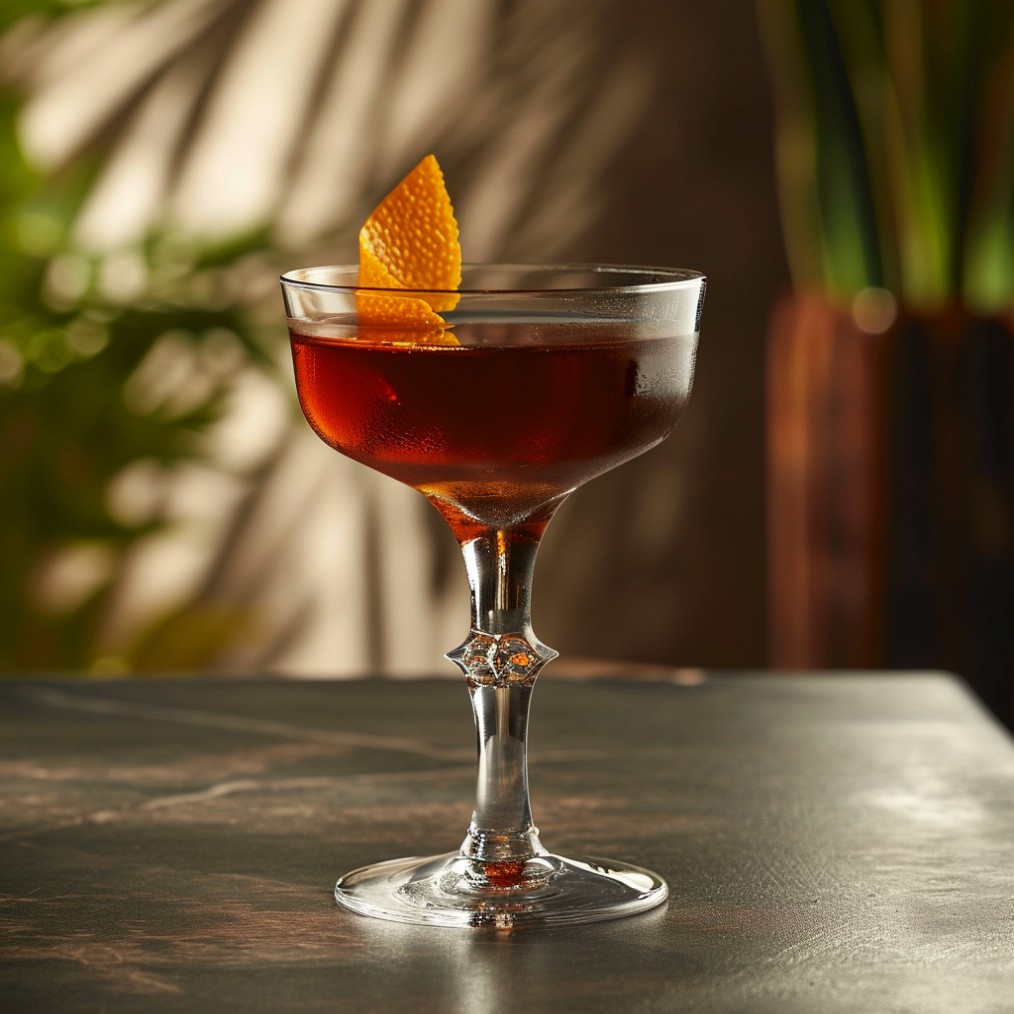
📋 Nutrition Facts
Main Alcohol Cynar
Alcohol 15%
Calories 180 calories
Fat 0g
Protein 0g
Carbohydrates 12g
Prep time 5 minutes
If you’re on the hunt for a cocktail experience that’s rich in flavor and history, the Bitter Giuseppe is a canvas of complex aromas and cultural tales. This drink is a symphony of bitterness, sweetness, and herbal whispers, ready to tantalize your palate. So let’s dive into the world of the Bitter Giuseppe together and discover its secrets. ⬇️
History
The Bitter Giuseppe cocktail is a relatively new addition to the world of mixed drinks, having emerged in the early 21st century. It was born out of a love for Italian aperitivos and the desire to create something unique. This drink quickly found its place as a sophisticated pre-dinner option that sets the stage for a delightful meal.
- The Bitter Giuseppe was first stirred to life in Chicago.
- It was the brainchild of mixologist Stephen Cole.
- The drink pays homage to Italian bitters, a beloved ingredient in its birthplace.
The taste of a Bitter Giuseppe?
The Bitter Giuseppe tastes like a whisper from an old Italian café, where sharpness meets a gentle caress of sweetness. Its core is a bold bitterness, softened by the herbal complexity and a hint of citrus.
I personally find the Bitter Giuseppe to be a thought-provoking sip that never fails to awaken my senses with its balanced bitterness and herbaceous undertones.
Interesting facts about Bitter Giuseppe
- The cocktail’s name, Giuseppe, is the Italian form of Joseph, adding to its European charm.
- It’s known for its use of Cynar, an artichoke-based bittersweet liqueur.
- Despite its bitterness, the Bitter Giuseppe has a loyal following among cocktail enthusiasts.
Ingredients
- Cynar: 2 oz (60ml)
- Sweet vermouth: 1 oz (30ml)
- Lemon juice: 1/4 oz (7ml)
- Orange bitters: A dash
- Water: A splash
A rocks glass is the ideal vessel for a Bitter Giuseppe, as its wide brim allows the aromas to envelop the senses. Alternatively, a lowball glass can also be suitable, providing a cozy embrace for this rich aperitif.
Recipe. How to make Bitter Giuseppe
- Pour 2 oz of Cynar and 1 oz of sweet vermouth into a mixing glass with ice.
- Add a dash of orange bitters and a splash of water.
- Stir until well-chilled, then strain into a chilled rocks glass with ice.
- Garnish with a generous lemon twist to highlight the citrus notes.
Though the Bitter Giuseppe is not overly sweet, it’s wise to be mindful of the sugar content in the vermouth. A lighter version can be made using a dry vermouth, or a natural sweetener to keep things on the healthier side.
Food Pairings
The Bitter Giuseppe, with its tantalizing blend of bitter and sweet, pairs beautifully with certain foods that complement its complex character. Here are some ideal companions for your next Bitter Giuseppe encounter.
Charcuterie
The richness of cured meats and the bite of aged cheeses create a dance of flavors with the Bitter Giuseppe’s herbal bitterness, enhancing the overall experience.
Dark Chocolate
A piece of dark chocolate alongside a Bitter Giuseppe brings out the drink’s inherent sweetness, making for a decadent pairing.
Grilled Vegetables
The smoky, charred notes of grilled vegetables like zucchini or bell peppers are a perfect match for the earthy undertones of this cocktail.
I’m quite smitten with Bitter Giuseppes; their bittersweet melody plays well with my taste buds, making every sip a delightful escapade.
🍸 Mix up your beverage routine
Receive the freshest cocktail recipes and bar trends directly in your inbox.
Bartender Advice
- Always use fresh lemon juice to maintain the vibrant acidity required to balance the bitterness.
- Chill the glass beforehand to enhance the crispness of the drink.
- Experiment with different brands of sweet vermouth to find your preferred sweetness level.
Now that you’ve mastered the classic Bitter Giuseppe, let’s explore the tweaks you can make and the exciting variations that await your taste buds.
What you could change in Bitter Giuseppe
- Proportions: Adjust the ratio of Cynar to vermouth to find your ideal balance of bitterness and sweetness.
- Lemon juice: Try substituting with orange juice for a different citrus twist.
- Garnish: Swap the lemon twist for an orange peel to add a different aromatic layer.
Bitter Giuseppe Variations
Sweet Giuseppe
- Ingredients: Add a splash of simple syrup to the original recipe.
- Recipe: Stir together with the other ingredients and serve with an orange twist.
Spicy Giuseppe
- Ingredients: Include a small slice of fresh jalapeño.
- Recipe: Muddle the jalapeño in the glass before adding the other ingredients.
Herbal Giuseppe
- Ingredients: Introduce a sprig of rosemary or thyme.
- Recipe: Stir the herbs with the other ingredients, then strain into the glass.
For a non-alcoholic “Virgin Bitter Giuseppe,” simply replace the Cynar and vermouth with non-alcoholic bitters and a herbal tea. Stir with lemon juice and a dash of orange bitters for that signature flavor.
Q&A
Can the Bitter Giuseppe be made sweeter?
Absolutely! Just add a splash of simple syrup, or choose a sweeter vermouth. It’s all about personal preference.
What if I can’t find Cynar?
Fear not, you can substitute with another amaro of your choice; each will bring its unique twist.
Is this a summer or winter cocktail?
The Bitter Giuseppe is versatile, perfect for warming you up on a cold evening or refreshing you on a hot afternoon.
Can it be batched for parties?
Yes, indeed! Multiply the ingredients by the number of guests and mix in a large pitcher or bowl.
What’s the key to the perfect lemon twist?
Use a sharp peeler or knife, and express the oils over the drink for that zesty aroma.
Are there any non-liquid variations?
Curiously, the cocktail’s flavors have inspired Bitter Giuseppe-infused desserts, like panna cotta or sorbet. Worth a try for the adventurous palate!